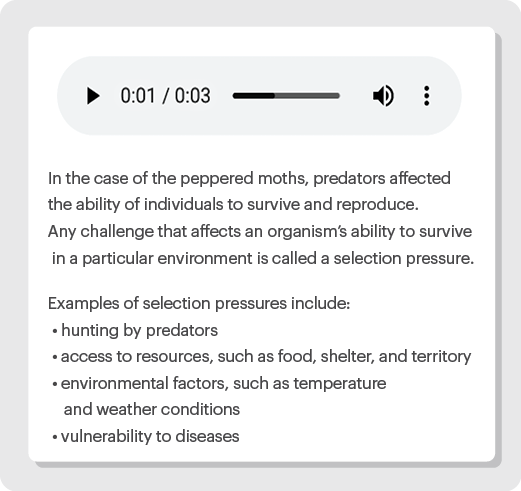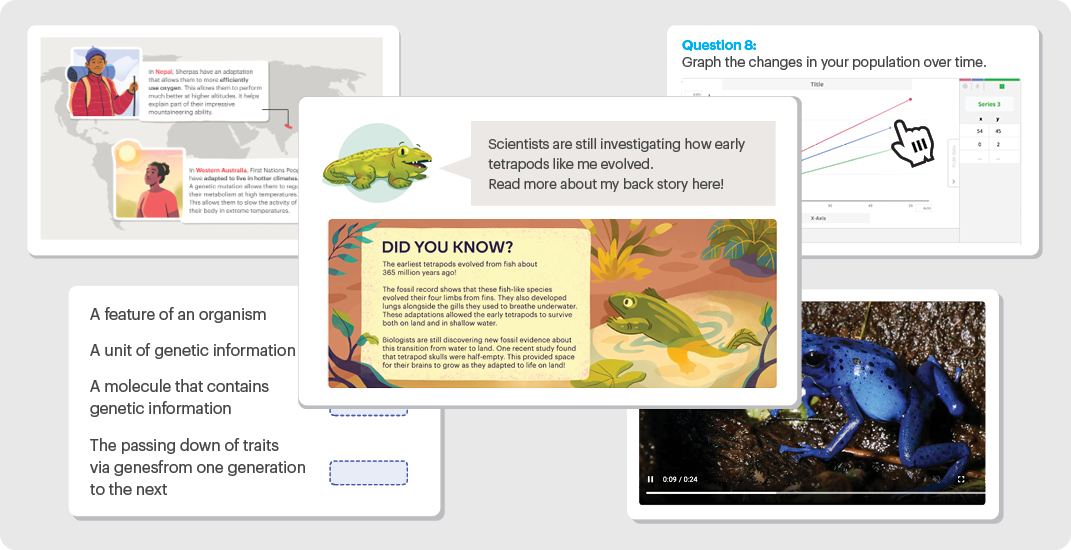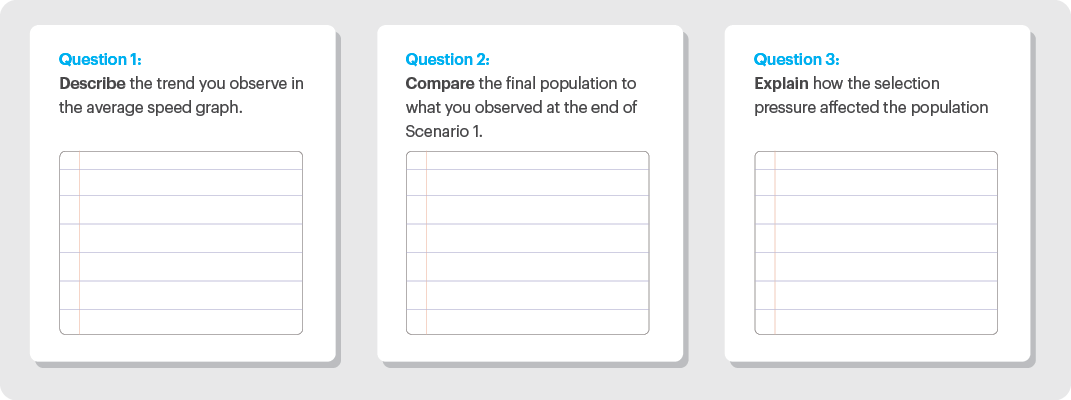Supporting English Language Learners
Learn about the different features in Stile that support English Language Learners!

All students learning English as a second language come to the classroom with varying proficiencies around reading, writing, speaking, and listening. As a result, instructional resources must provide multiple entry points towards achieving instructional outcomes.
Outlined are just a few highlighted features that demonstrate Stile's commitment to supporting language learners in the science classroom.
Audio narration
Every lesson in Stile includes options for audio narration. Students can use the audio narration to have text read aloud to them as they follow along. Teachers can also record their voice for their students to listen to.

Audio narration supports reading fluency for all language learners by providing a verbal model of a fluent reader.
Unit Glossary and Tier 3 Vocabulary
Tier 3 technical vocabulary is often the most challenging for language learners as they are unlikely to hear this vocabulary in day-to-day discussions or outside their science classroom. Therefore, planning for this kind of vocabulary development is essential. Stile provides a glossary for every unit that includes domain-specific vocabulary, a description, and an image to support long-term processing.

Additionally, these vocabulary words are bolded and embedded throughout each Stile lesson. Finally, students can practice their vocabulary knowledge using our free Stile Quiz app that can be downloaded on any mobile device.
Multimodal Learning
Multimodal learning refers to learning that taps into all of our senses. Research suggests that we're likely to remember more and form stronger connections to the learning content and experience when we tap into these senses.
Stile strives to create lessons and units that engage auditory, visual, and kinesthetic learning. For example, Stile lessons frequently deploy various multimedia to engage learners and deepen their understanding of complex scientific concepts. This includes images, graphics, videos, simulations, etc.

Teachers can use any of the collaborative discussion questions and tools to facilitate live debates, discussion protocols or Socratic seminars.

Finally, Stile units include easy-to-prep and engaging lab activities that allow students to apply their understanding through hands-on activity or investigation.
Practicing with Language Functions
Throughout each lesson in Stile, students are asked to produce writing that requires them to apply different language functions. These writing tasks allow students to practice writing for various purposes.

Writing exemplars
Stile lessons include model answers where students are asked to apply concepts through written expression. These writing exemplars provide students with examples of proficient written responses in addition to providing the teacher with a model for building sentence frames. Teachers also have the flexibility to revise or create their own model answers.

Fostering Digital Literacy
On top of developing a second language, building digital literacy skills can be a challenge for language learners. State assessments include many question types that inadvertently include assumptions about all learners’ digital literacy skills.
Throughout each lesson, Stile provides opportunities for students to practice these skills through interactive digital activities such as drop and drag, completing tabular information, manipulating graphs/data, etc.

